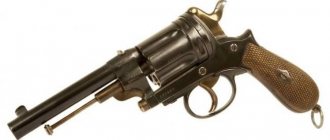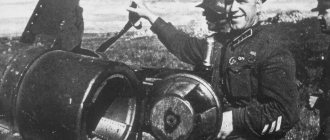The Austro-Hungarian Empire was a union of rulers: the Austrian Emperor and the Hungarian King. This type of government is called Dual Monarchy. Each of these countries, in addition to its monarch, also had its own parliament, which managed the internal affairs of the country, as well as managed finances and resolved military issues. This empire resembled a successful marriage of convenience. After combining the Italian and German campaigns into one. This changed the balance of power in Europe. These combined campaigns undermined the European powers' belief in the primacy of the Habsburg Monarchy.
Austria suffered heavy losses from the French in 1859. Austria also lost the Seven Weeks War with Prussia. These wars undermined the country's economy. There was unrest on the borders on both sides. Austria's dominance in Europe was rapidly declining. It was losing its influence on other European states. Neighboring Germany on the one hand and Italy on the other were rapidly industrializing their countries. In such conditions, Austria was forced to look for a new political partner. The Habsburg monarchy did not want to lose its supremacy in the world.
Creation of the Dual Alliance
In 1848, a revolution occurred in Hungary. The Magyars and Czechs declared their independence from Austria. This uprising was suppressed by Austrian troops in the Czech Republic. The Hungarian Republic lasted longer. Russian troops helped the Austrians win this war. Russia sent one hundred thousand soldiers there. To maintain its dominance in Europe and boost its economy, Austria entered into an alliance with Hungary. This dual alliance became known as the Austro-Hungarian Empire, which lasted 51 years.
Part of the resulting union is called Galicia in some sources, the area near the Laita River. These are Austrian lands. Initially they had no name. In addition to the Austrians, ethnic Hungarians lived there. The same territory was on the Hungarian side. The Austro-Hungarian Empire had a diverse national composition. It was inhabited by Austrian Hungarians and Hungarian Magyars, Czechs and Slovenes, Russians and Serbs, Croats. They belonged to different religious denominations: Catholic Christianity and Orthodox; There were Protestants and Muslims among the population. Clashes frequently occurred among these population groups.
Often in world history, individuals can influence or change its course. This change occurred in 1814, when Napoleon was defeated and sent into exile. A year after this event, in 1815, the House of Habsburg was restored by the Congress of Vienna, and their lands were returned to them. The Austrian Chancellor Prince Clemens von Metternich played a major role in this. He managed to make Austria a leading power in Europe through cunning diplomatic means.
Only in 1848 did its power waver, after unrest in European countries. This was also influenced by the enmity of the Habsburgs and Hohenzollerns. This confrontation began even before 1740. The Germans wanted to dominate Europe. The Prussian Chancellor Otto von Bismarck achieved superiority. This happened in 1866. Then the Austrian army was defeated in Granz. Thus, Great Germany began the path to world domination, accompanying it with numerous wars.
A decrease in Austrian influence also occurred on the Apennine Peninsula as a result of the Austro-Sardinian War. Hungarian discontent also continued. The Hungarians were unhappy that they were ruled from Austria. Other national groups also began to grumble. To end discontent and preserve the monarchy, Franz Joseph began to negotiate a compromise with the Magyar aristocracy. Austrian Prime Minister Richard von Belcredi advised Franz Joseph to conclude a constitutional treaty with various national groups. Create a federation of different nationalities. He said that it was necessary to negotiate not only with the Magyars. But the Austrian emperor concluded only a dual alliance, since the Hungarian nobility did not want to share leadership with anyone other than the Austrian monarch.
After the conclusion of the dual alliance, the coronation of the Hungarian monarch took place. Hungary also created its own parliament in Budapest. He could independently pass laws on the territory of historical Hungarian lands. Although the Hungarian nobility had the final say in their adoption. The remaining national minorities: Romanians, Russians, Poles, Slovaks, Bulgarians and others could not defend their interests.
Fall of the Empire
A week later, German troops crossed the border of the empire, and the Austro-German War began. The Austrian 2nd Army, stationed in the Sudetenland, was less prepared, but thanks to the fortifications, it successfully repelled the attacks of the Wehrmacht. The offensive in Bavaria progressed very slowly; the onslaught of the Austro-Hungarian tank forces was not as strong as they had hoped in Budapest. But in general the situation was within acceptable limits.
The military industry was working at full capacity, and within six months Austria-Hungary was supposed to have a completely modernized army of one million. The latest 38M Toldi tanks and Weiss WM-23 Silver Arrow fighters had just entered production, and the infantry was preparing to receive the Kirali39M submachine gun.
But the takeoff was followed by a terrible fall. On December 20, 1939, the Wehrmacht broke through the Sudetenland defensive positions in the Ostrava region. German panzers immediately rushed into the breakthrough. There was nothing to cover the hole with. On Christmas Day, German troops were already stationed on the outskirts of Budapest. There was no time for a holiday in the capital.
Emperor Otto IV, along with a small number of his entourage, left the country on a Greek plane and took refuge in Athens, at the invitation of the Hellenic King George II. Although the last knights of the empire held out in the Alpine mountains for almost two more weeks, the territory of Austria-Hungary was occupied and included in the Reich.
Thus, it was once again proven that in the turbulent years before the outbreak of World War II, a lot could be achieved. But the result inevitably turned out to be one thing - falling into the millstones of war, which instantly turned the history of any country that was unable to resist the military power of the aggressors into dust.
Austria-Hungary was revived for only two years. With the help of military threats (often unsubstantiated) and cunning diplomacy, she was able to achieve the position of a great power, but did not have time to prepare for war and quickly died under the tracks of German tanks.
Structure of government in Austria-Hungary
The Austro-Hungarian government structure consisted of three parts. The first part is a unified administration under the monarch. The second part is the Austrian government. The third part is the Hungarian government. The Austrian and Hungarian parts had their own parliaments, headed by their own prime minister. The government under each monarch coordinated all decisions of parliaments. Governments were responsible for the armed forces, navy, foreign policy, and customs. Hungary had two more unique governments that were responsible for the regions of Croatia and Galicia.
All governments were governed by a joint council of ministers. It included three ministers: joint finance, military and foreign policy, both prime ministers, archdukes and the emperor.
All decisions were made as part of two delegations from Hungary and Austria, which voted separately for the adoption of any decisions. The monarch had the last word. Disputes often arose between the parties. Even though military doctrine had been defined, controversies arose over conscription. Often governments found themselves on the verge of breaking the alliance. Each side tried to advance its interests. National minorities also sought to influence and advance their interests.
Relations in the language sphere were also difficult to build. Citizens did not want to accept German as the only state language. Representatives of each nation sought to ensure that children were taught in their native language. Hungarian was also not recognized as the official language. The Hungarian government especially did not compromise. All schools were ordered to teach only in Hungarian. All textbooks and books in other languages were burned.
The unification of the two powers stabilized Habsburg rule. The place of the most influential power in Europe was preserved. Vienna became the center of development of European culture. A new Constitution was adopted, which stipulated the equality of all before the law, freedom of speech, freedom of movement, and inviolability of personal property. It was the most advanced constitution of the early 20th century. Church control over the school was abolished. Compulsory eight-year education appeared. Austria-Hungary gradually became a multinational federation. Its economy took off sharply. Economic growth especially intensified around Vienna and the Austrian territories. Gradually, economic growth spread to the Hungarian regions. But the differences were still visible.
The western part of the empire was more developed. But the economy of the empire still lagged behind the economies of other European powers, such as Great Britain, France, and Germany.
Kingdom of Serbs, Croats and Slovenes
The Slavic population of the Balkan Peninsula supported Serbia even before the outbreak of the First World War, and when hostilities began, about 35 thousand people fled from Austria-Hungary. In Paris in 1915, the Yugoslav Committee was created, the purpose of which was to conduct an anti-Austrian campaign among the Slavic population of the Balkan Peninsula. The head of the committee proclaimed the unity of Serbs, Croats and Slovenes. He also hoped to create a unified Slavic state in the future, but the idea failed.
Serious changes began after the October Revolution and the collapse of Austria-Hungary. Dissatisfaction with the Austrians over other nations grew among the masses. A large-scale crisis began, and soon the regions formed their own governments. They did not begin to fulfill their duties for quite a long time, waiting for the moment to declare independence. The state of Slovenes, Serbs and Croats was proclaimed on October 29, 1918.
Relations with Germany, Italy, Russia
After Russia's victory over the Ottoman Empire in 1878, the extent of Austria-Hungary became larger. International Congress, which took place in Berlin. She was given the lands of Bosnia and Herzegovina, as well as other territories divided between the victorious powers. But Germany's power also increased. Germany, Austria-Hungary and Italy formed the Triple Alliance. They saw the Russian Empire as their enemy. Some Austrians proposed uniting the annexed lands of Bosnia and Herzegovina and Croatia into a third equal region of the empire.
Kingdom of Galicia and Lodomeria
In the kingdom of Galicia and Lodomeria, formed after the division of the Polish-Lithuanian Commonwealth, several peoples mixed, the predominant of which were Ukrainians and Poles. The confrontation between them has not stopped since its formation. The Poles managed to maintain leadership positions in the region with the support of the imperial authorities, but with the outbreak of the First World War, local Ukrainians became more active. In short, the collapse of Austria-Hungary became in this case only a pretext. Fighting began, and after the Polish-Ukrainian war, the Polish-Soviet war began.
Reasons for the collapse of Austria-Hungary; Russia's role in this collapse
The Austro-Hungarian Empire collapsed only after the First World War. This happened after the assassination of Archduke Franz Ferdinand and his wife, who was the heir to the Austrian throne. This atrocity was committed by a Serbian nationalist on June 28, 1914, while Franz Ferdinand was in Sarajevo. Austria-Hungary could not forgive such an act of violence and insult and responded with military action. Germany took her side.
Russia took the side of the Serbs, defending the fraternal Slavic people. France also took the side of Russia and Serbia. With this event the First World War began. Austria-Hungary lost this war. Unrest and riots began within the country. As a result of all this, the Austro-Hungarian Empire collapsed. Austria and Hungary became republics. The Habsburg dynasty was expelled. Also, several more independent states were formed on the territory of the once great empire. The Austro-Hungarian Empire served as the prototype for the European Union.
Return of Transylvania
The summer of 1937 passed in the intense work of Austro-Hungarian diplomats shuttling between Budapest and Bucharest. They carried out the most important task - to find out the conditions under which Romania would be ready to consider the issue of Transylvania, a huge region in the west of the country inhabited by a Hungarian majority.
In the end, making sure that the Romanians were not ready to compromise, Emperor Otto IV ordered troops to take positions on the Romanian border and sent an ultimatum to King Carol II of Romania: “Transylvania - or war!” Bucharest retreated on July 14, 1937, and the ancient Hungarian lands returned to the bosom of the empire.










